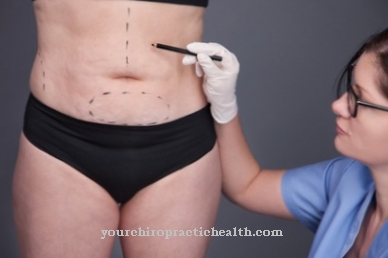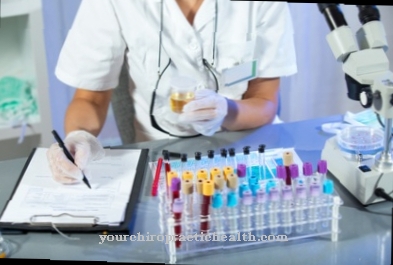The Computed Tomography or short CT is, in addition to X-rays, magnetic resonance imaging and ultrasound, another imaging method. It is created with the X-rays, internationally known as X-rays (X-Ray). Since individual cross-sectional images are created in computed tomography, these must be projected over one another by means of a computer in order to be able to achieve results.
History & function

As the inventor of the Computed Tomography the Austrian mathematician Johann Radon, the physicist Allan M. Cormack and the electrical engineer Godfrey Hounsfield may be named. The first CT scanner was put into operation in London in 1972 at Atkinson Morley Hospital. In 2009 alone, around 4.88 million patients in Germany were examined using computed tomography.
The Computed Tomography is used not only in the medical field, but also in archeology for the examination of ancient objects, but also for the examination of mummies.
With it, for example, the age of "Ötzi" found in the Alps was determined. Computed tomography is also used in industry.
application
In the field of medicine, the Computed Tomography used by means of the spiral technique. Here the patient is slowly driven through the device while the device rotates. Computed tomography is used, for example, to examine the head. The individual arteries, but also areas of the brain, can be efficiently displayed here using contrast media. Most of the time, the first series of examinations is carried out natively - i.e. without contrast agent - the second is carried out after the contrast agent has been administered. This makes any changes in the tissue even better.
Computed tomography is also used to examine the thorax, abdomen, upper abdomen, the entire spine, but in some cases also to examine the limbs. This is especially the case in obese patients. While the patient is lying in the computer tomograph, the sectional images are processed by an external computer with the appropriate software. The employees of the practice or hospital also sit in their own control room, but maintain contact with the patient via a microphone.
If a patient experiences problems during the computed tomography, for example claustrophobia, they can give feedback at any time and then either receive medication for sedation, i.e. to calm them down, or the computed tomography is canceled after consulting the doctor.
Side effect & dangers
The Computed Tomography has some advantages over the other imaging methods, but also a few disadvantages. For example, it is much more radiation-intensive than an X-ray examination. In computed tomography, for example, up to 50 times the radiation dose is used than in conventional mammography; compared to chest x-rays, the radiation dose in computed tomography is up to 575 times higher.
Therefore, one should carefully consider whether to have a computed tomography performed. Anyone suffering from claustrophobia should prefer computed tomography to magnetic resonance tomography. Obese (i.e. overweight) patients should also be examined by means of computed tomography, since the "tube" of the MR tomograph is much narrower than that of the computed tomograph. One advantage of computed tomography is that the cross-sectional images are of much better quality than individual x-ray images. Compared to magnetic resonance imaging - which works with magnetic fields and not with X-rays - it is much cheaper.
Since the radiation exposure is much lower with new computed tomographs than with old devices, you should visit a doctor's practice or hospital where computed tomography is one of the standard examinations. Here one can assume that the latest equipment will be used.
Computed tomography should still not be carried out too often, since the radiation dose - coronary computed tomography is an example here - can be up to around 14 millisieverts per examination.
An employee of a German nuclear power plant may be exposed to a radiation dose of 20 millisieverts per year. This comparison should be kept in mind before performing a computed tomography scan. However, if computed tomography is considered medically necessary after consulting your doctor, you should not do without it. The radiation dose also decreases again relatively quickly. Even so, the risk of cancer is higher after a computed tomography scan.

























.jpg)

.jpg)
